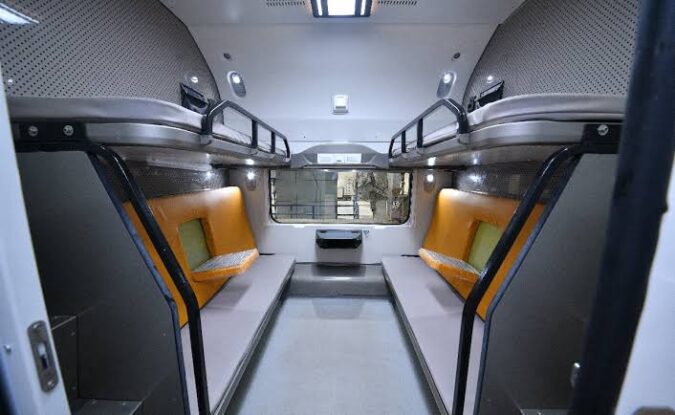Indian Railways is about to revolutionize passenger travel with the launch of world-class, semi-high-speed Vande Bharat sleeper trains. These advanced trains, equipped with modern amenities, are expected to enhance long-distance travel experiences significantly. The government has set a target to introduce 30 Vande Bharat sleeper trains in the current financial year. The first of these trains is expected to hit the tracks by the end of July.
According to railway officials, the speed trial of the first Vande Bharat sleeper train has been successfully completed. The Research Designs and Standards Organisation (RDSO) in Lucknow has finished all technical and speed evaluations. The Railway Board is currently finalizing the route and fare structure for this maiden sleeper train.
Once this is done, Prime Minister Narendra Modi is expected to flag off the first train next month. In total, 30 such trains will be launched during the 2025–26 financial year. Of these, 10 trains have already been manufactured by the government-owned PSU BEML (Bharat Earth Movers Limited) in Bengaluru. After the first train is launched, the remaining trains will be introduced in phases. Additionally, 8 to 10 sleeper trainsets are being manufactured at the Integral Coach Factory (ICF) in Chennai, with BEML and ICF jointly producing the coaches.
Speed Up to 160 Kmph
The next-generation Vande Bharat sleeper trains are being designed for speeds ranging from 160 to 240 kmph. Currently, trains like Rajdhani, Shatabdi, and the existing Vande Bharat chair car versions run at a maximum speed of 130 kmph. With upgraded features and advanced technology, the sleeper trains are expected to initially operate at 160 kmph, with speed gradually increasing in phases. These high-speed trains will primarily serve routes like Delhi–Howrah and Delhi–Mumbai. Notably, these corridors are being upgraded with safety technologies like ‘Kavach’ to support high-speed operations.
Dedicated Corridors for High-Speed Travel
Railway Minister Ashwini Vaishnaw recently hinted in an informal meeting that instead of relying on foreign bullet trains, India will focus on running high-speed Vande Bharat sleeper trains. He explained that speeds up to 240 kmph are considered high-speed by global standards, and exceeding this limit drastically increases operational costs. Hence, there are no plans to collaborate with Japan or European nations on bullet train projects. Instead, elevated high-speed corridors will be developed to run the Vande Bharat trains at 240 kmph in the future.


